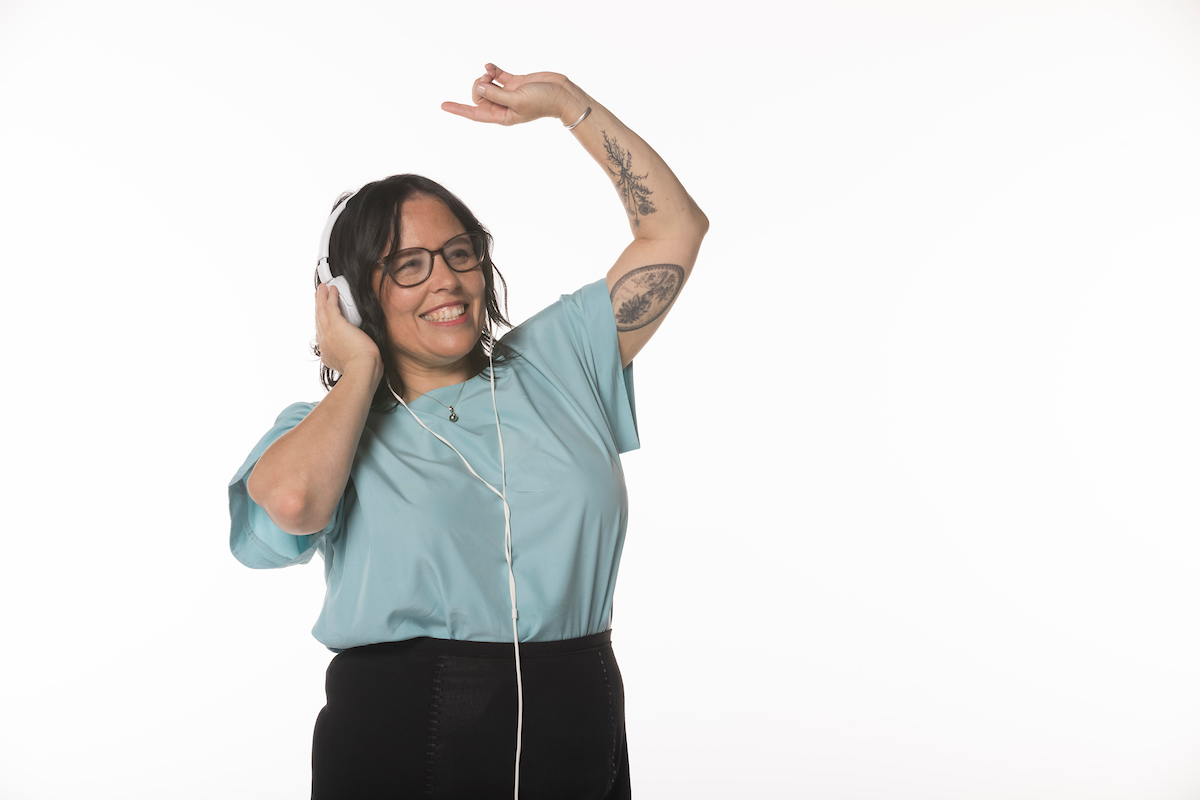Drop the beat: NEH grant funds project on women’s role in the birth of hip hop

Behind early hip hop artists, the groundbreaking deejays, MCs and breakdancers was … mom.
Next year, hip hop will celebrate its 50th year of beats, rhymes and culture. While male artists get the most public acclaim, women were involved in the artform from the very start — often by spinning records for family and friends.
Binghamton University Associate Professor of English Jennifer Lynn Stoever recently received a $60,000 award from the National Endowment for the Humanities to research this hidden history for her next book, Living Room Revolutions: Black and Brown Women Collecting Records, Selecting Sounds, and Making New Worlds in the 1970s Bronx.
“Women have amazing musical taste and influence over musical taste. But moms are caricatured in popular culture [so that] ‘Oh, that’s music that your mom would like’ is an insult,” she said. “I want to make sure that women are known for their musical connoisseurship.”
Stoever is an American studies scholar who works at the intersection of African American studies, sound studies and popular music. Her first book, The Sonic Color Line: Race and the Cultural Politics of Listening, analyzes how racial ideologies operate through sound and listening, and archivally traces how sound and music became historically racialized as “Black” and “white” in the United States.
A native of Riverside, Calif., Stoever has been involved with hip hop herself for more than 30 years and has her own vinyl collection, inspired by her dad. She even appeared in a music video, the rapper Sammus’s “1080p.”
“One of the reasons I love hip hop is that it tries to break the sonic color line. In my first book, I talk about the way that American society assigns racial identities in terms of sound, and I think certain hip hop deejays challenge that,” she said.
From the living room to the dance floor
The 1960s and ’70s also saw a groundswell of political activity, from civil rights and the Black power movement to feminism. Music played a role in political resistance — and so did Black and Latinx women’s record-collecting practices, for themselves and their children.
Aug. 11, 1973, marks what is now considered the very first hip hop event: DJ Kool Herc’s “Back to School Jam” in the Bronx. Women are central to that story, and not just as audience members; the event came about when Herc’s younger sister Cindy asked him to play music at a neighborhood party as a way to earn money for back-to-school clothes.
And it goes back even further than that. Herc’s mother, Nettie Campbell, immigrated to the U.S. from Jamaica in the 1960s. A music fan, she would send records from New York City to her Jamaican family — which included Herc — until he was able to join her in the Bronx in 1967.
“What I’m arguing in my book is that we can think of women like Nettie as hip hop’s first deejays, and that the music you play at home is really important to the development of musical scenes and musical tastes,” Stoever said.
Hip hop deejays are known for “digging in the crates” in search of a fresh sound; the term references the milk crates used to store record collections. And a lot of times, those crates belonged to women like Afrika Bambaataa’s mother, the source of the first 200 records in the hip hop icon’s highly prized collection, now preserved at Cornell University. Hip hop historians didn’t record her name, a fact that prompted Stoever to search for her identity and the role music played in her life.
Certainly, Bambaataa’s mother — named Lamarse Taylor, as Stoever recently unearthed from the archive — wasn’t alone in sharing her musical tastes. Grandmaster Flash’s mother, Regina Saddler, is another good example; in fact, she helped him learn how to solder so he could make his own turntable system. He was also known for borrowing his sisters’ records without asking.
One popular album in Bronx women’s collections is Aretha Franklin’s Amazing Grace. Stoever plans to trace the influence of this and other common albums through a sonic analysis of hip hop. Record collection is back, thanks to the “vinyl revival,” and Stoever will also detail three contemporary vinyl collectives created by and for women of color.
At the heart of the project are 20 oral histories that Stoever is co-creating with Black and Latinx women who lived in the Bronx in the 1970s and ’80s and collected records to play at home. The full oral histories will be permanently housed at the Cornell Hip Hop Collection and hosted with theKEEPERs, a Black women-led worldwide collective of artists, activists and scholars founded in 2020 by executive director Akua Naru, rapper and former Nasir Jones Hiphop Fellow at the Harvard Hiphop Archive Research Institute. TheKEEPERS are currently developing a comprehensive digital archive of women and girls in hip hop, the first of its kind and free to the public.
“I just keep finding that story [of mothers’ influence] over and over, and it is really exciting,” Stoever said. “Not only were Black and Puerto Rican women’s record collections important to their lives and their children, but they had a huge impact on the sound of hip hop.”
